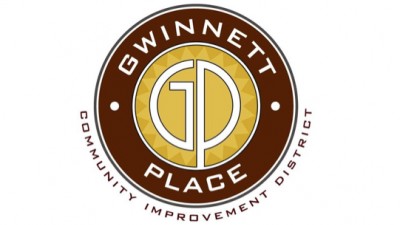From Cookie-Cutter To Fortune Cookies: The Redevelopment Of A Suburban Mall

There are two indisputable facts about the rise and fall of shopping malls in the United States. The first is their spectacular rise: They bloomed like wildflowers in the late 20th century, with communities across the country soon sporting nearly identical shopping centers.
Then, done in by changing consumer habits, malls have become an endangered species this century. One report released prior to the coronavirus pandemic predicted that as many as 25% of U.S. malls would be closed by 2022, leaving behind vacant real estate and gaping holes in local communities' tax bases and identities — and since the pandemic, the outlook has only gotten worse.
Now that it looks as though the end is nigh for American malls, it is the job of people like Allison Stewart-Harris, community planning manager with civil engineering and planning firm Vanasse Hangen Brustlin Inc., to help figure out what comes next for these brick-and-mortar white elephants.
“Thousands of these malls were built in a very cookie-cutter fashion all across the country,” said Stewart-Harris, whose firm was selected to lead the revitalization strategy for suburban Atlanta's Gwinnett Place Mall. “Now we're in a situation where the mall model of retail just fundamentally doesn't work anymore, but there is no cookie-cutter solution to vacant malls. So we have this extremely common problem, and there's no single pathway to get out of it.”
A cookie-cutter approach might have contributed to the eventual demise of malls, but Stewart-Harris and VHB take a more nuanced, localized approach to revitalizing the old properties.
“Every revitalization plan has to be extremely unique and based on the local market — what its needs are and what that community looks like today,” she said.
Most malls might be generic, but their local communities are not. Stewart-Harris said that is the case with Gwinnett Place Mall, which opened in 1984. The interior of the mall closed earlier this year, except for a few anchor tenants, such as the still-open Macy’s.
Stewart-Harris said the strength of the property in fast-growing Gwinnett County lies not in its abandoned food courts or acres of unused parking space, but in the people who live nearby.
“One of the biggest opportunities here are the demographics of Gwinnett County, which are the demographics of the future for the rest of the United States,” she said. “We have an incredibly diverse suburb with huge growth coming. I think that a lot of people see Gwinnett County as sort of a laboratory of the future where we can test things to see how they’re going to pan out 10 or 20 years down the line in other communities as they follow similar trajectories.”
Stewart-Harris said Gwinnett County has another important advantage. A successful mall revitalization, she said, depends on the local community gaining control of the property, rather than being at the mercy of property owners who might be located far away and have other priorities. Thankfully, in Gwinnett County, the first scenario is the case.
The county took ownership of a sizable portion of the property in April, which instantly gave the community much more control over the project, as well as an even greater stake in its success.
“I think that bold move by the Gwinnett County Board of Commissioners gives us a leg up compared to some other communities,” said Joe Allen, executive director of the Gwinnett Place Community Improvement District. “We struggled for several years because there were multiple owners. But now, with the county invested as an owner and leadership making this site a priority for redevelopment, you're going to see this process really pick up steam and move forward in the coming years.”
Gwinnett County is not doing it alone, however. VHB has gathered a team of experts from across the country, including some who have been involved in other high-profile mall redevelopments, to help it create the revitalization plan that Stewart-Harris expects will be ready to present to the county by spring.
At this point, Gwinnett County, the CID, VHB and the team it assembled are heavily into outreach to get the input of local community members. They are sponsoring information booths at local events, hosting stakeholder focus groups and have launched a new website, www.gwinnettplacetobe.com, to keep residents and local business leaders informed and engaged.
“We are trying to make the process fun and interesting,” Stewart-Harris said. “We even created custom fortune cookies so that when you open them up, it tells you Gwinnett Place’s fortune. For instance: 'Great places don’t just happen — they are built, block by block.' We really want to highlight that this is not your everyday site, and this is not your everyday planning process.”
What will Gwinnett Place look like after this multi-year effort? Not even a fortune cookie can tell, but Stewart-Harris and Allen agreed that it won’t be a traditional mall. Instead, the community seems to favor a multiuse, transit-oriented redevelopment where people will be able to live, work and shop.
“I think we have some high-level consensus on what we want, but I don't think we know quite what it looks like yet,” Stewart-Harris said. “What we're hearing very consistently is that people want a place that's alive, that celebrates its international culture and provides a more multifunctional space.”
This article was produced in collaboration between Studio B and Gwinnett Place Community Improvement District. Bisnow news staff was not involved in the production of this content.
Studio B is Bisnow’s in-house content and design studio. To learn more about how Studio B can help your team, reach out to studio@bisnow.com.

